'Nightmare is realised': Three fires merge at NSW-Victorian border
Three huge blazes burning around the NSW and Victorian border have merged to create a giant blaze covering more than 600,000 hectares just south of the Snowy Mountains.
Communities on the border have been warned to seek shelter as the massive Green Valley fire flares under 90km/h gusts.
The emergency warning issued on Friday evening was for properties at Lankeys Creek, and between Jingellic and Welaregang.
The 233,000-hectare Green Valley fire merged with the nearby East Ournie Creek blaze and the huge 312,000 hectare-Dunns Road fire, which were all at emergency level on Friday night.
“Nightmare is realised. Two massive fires merge in Snowy Valley as winds threaten to wreak havoc overnight,” one person wrote to Twitter in response to the bushfire crisis.
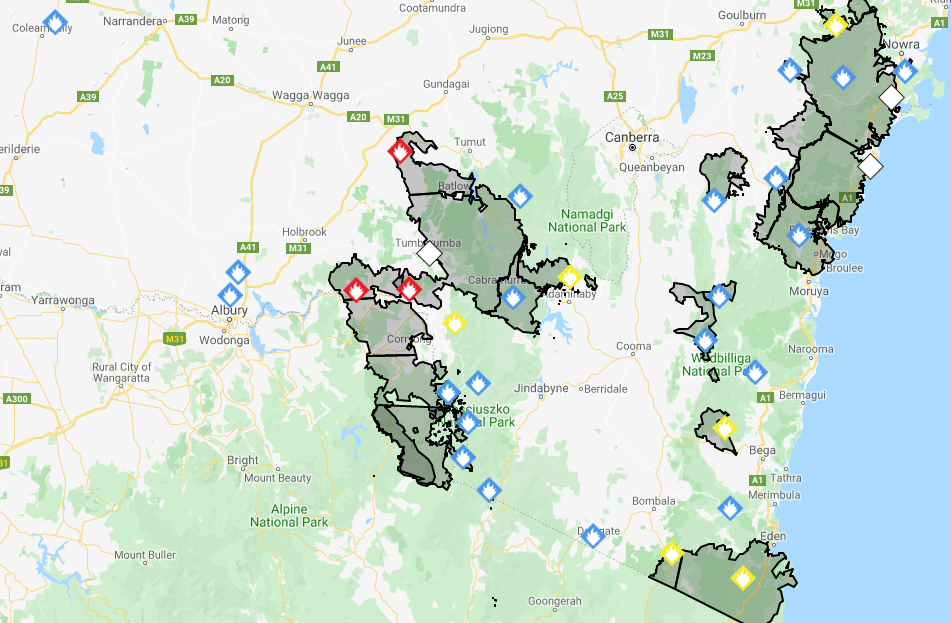
An emergency warning said telecommunication outages in the area may result in the inability to contact triple-0 or receive emergency alert telephone messages or access the internet.
“Strong winds are being experienced across the fireground. This is pushing the fire in a number of different directions. These winds will continue for the next few hours,” it said.
Spokesman for the Rural Fire Service Anthony Clark told The Sydney Morning Herald the East Ournie Creek and Green Valley-Talmalmo fires had collided with the Dunns Road fire.
“What we're really seeing with a number of these fires merging is a number of small fires started by lightning strikes, across the landscape. And as they grow, we see fires merging,” Mr Clark told the publication.
“It provides a challenge for firefighters as when they merge, it increases the size and opens up more uncontained perimeter.”
Residents race against time to escape life-threatening fire
People in Victoria's bushfire-ravaged northeast and East Gippsland regions were told they had just hours to leave before conditions deteriorated on Friday.
A cool change passing through the state was expected to bring strong southwesterly winds of 70km/h to 100km/h to the regions about 7pm.
People in alpine towns were being warned they could evacuate until 7.50pm, but then it would be too late to leave.
"Evacuation after this time is considered life threatening," the VicEmergency warning read.
"Shelter indoors when the fire arrives – protect yourself from the radiant heat."
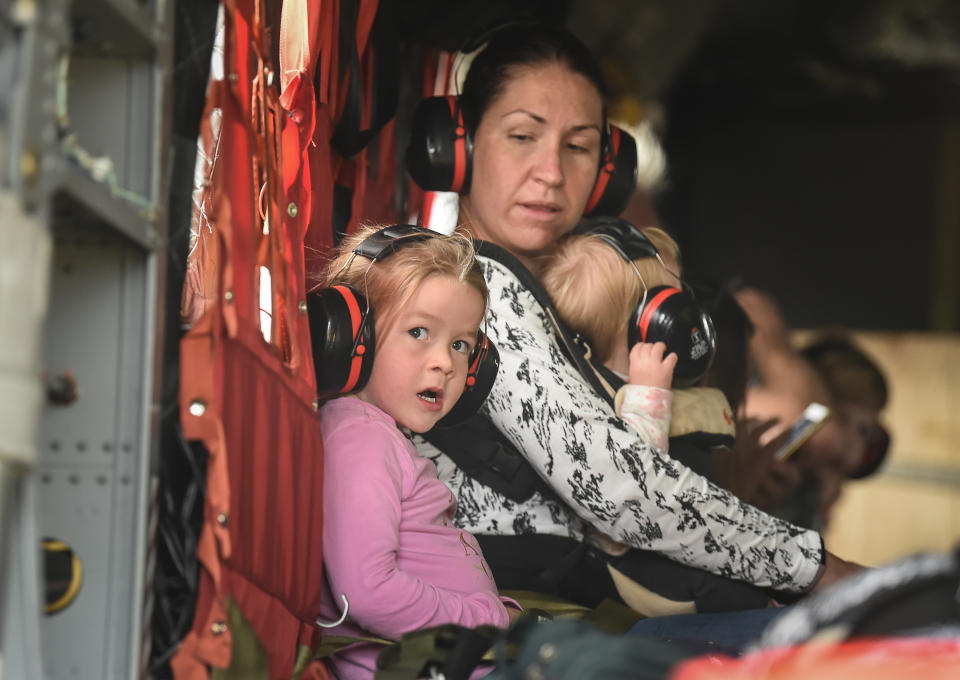
Six emergency alerts, the highest-possible level, are in place while three evacuation alerts have been issued.
Relief centres are set up in Bonegilla, Myrtleford and Wangaratta in Victoria’s northeast for evacuees.
Luke Heagerty from the State Control Centre says there is a "real possibility" the fires in the region will merge with those near the NSW border.
"What we're hoping is that with the rainfall that's coming with this change there will be at least some moisture in the air, which we know does slow the spread of fires," he told 3AW.
"So we're hoping that bit of rainfall could at least avoid the merging of some of those fires or the spread of other fires in Victoria."
Maps of Australia dating back to 1910 reveal alarming weather pattern
Climate activists hit out at bushfire 'scare tactic' ahead of protests
Warning over 'potentially deadly' Instagram trend amid bushfires
Deputy Incident Controller Jarrod Hayse told reporters despite a possible rainfall of up to 10mm it was "highly likely" dozens of blazes in the region will merge.
"These fires are going to go for some weeks. It's going to take significant rainfall to put these fires out," he said.
"The safest thing to do is to leave and to leave early."
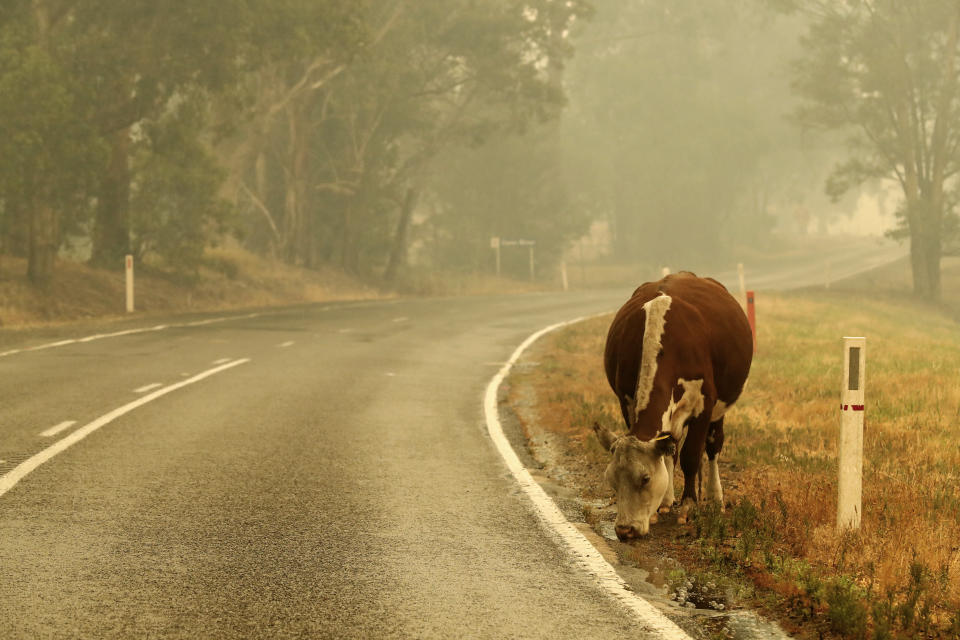
The forecast rain is a fifth of what is needed to put out the fires and could pose an extra hazard, weather bureau senior forecaster Michael Efron said.
"In terms of the rain today, it could create quite hazardous conditions in terms of making the landscape slippery for those firefighting vehicles," he said.
"If we do get some locally heavy rain that could actually cause a lot of debris to be swept away given the bare ground in that area."
Victoria's state of disaster declaration has been extended into the weekend and a total fire ban is in place for the Mallee, Northern Country, North Central, North East, East Gippsland, West and South Gippsland.
After spending more than a week in East Gippsland helping communities evacuate and move desperately-needed supplies, the defence force is expanding its support to parts of the northeast.
Defence personnel are working to protect Indigenous cultural sites at Koetong with Parks Victoria, and are assisting with evacuations and road clearance.

Defence has also used a Bushmaster vehicle on the closed road between Orbost and Mallacoota on Friday to clear burning trees and other debris.
Ahead of a potential spike in conditions on Friday, Premier Daniel Andrews pleaded with Victorians to leave fire-danger areas when alerts are issued.
About 67,000 people left East Gippsland last week as the fire disaster unfolded there.
There are 22 fires burning across the state and more than 1.2 million hectares have been burnt since November 21.

The fires have killed three men: Forest Fires Management worker Mat Kavanagh, 43, died when his vehicle crashed on the Goulburn Valley Highway on January 3.
Mick Roberts from Buchan and Maramingo Creek man Fred Becker were killed in the fires at East Gippsland on New Year's Day.
Authorities have made about 3000 damage assessments and found 244 homes destroyed and 347 other structures ruined.
‘Difficult night’ ahead in NSW
Two new blazes are among almost a dozen fires flaring up across NSW as authorities urge vigilance and cooperation.
Nine fires across the Snowy Valley and South Coast – including the massive Green Valley and Dunns Road fires – were elevated to watch-and-act alert on Friday afternoon.
Meanwhile, an emergency warning was issued north of Coonabarabran in the state's north after a fire broke out at Yearinan Station Road, Bugaldie.
NSW Rural Fire Service Commissioner Shane Fitzsimmons said that fire and another in a remote region of the Blue Mountains appear to have begun due to lightning strikes.
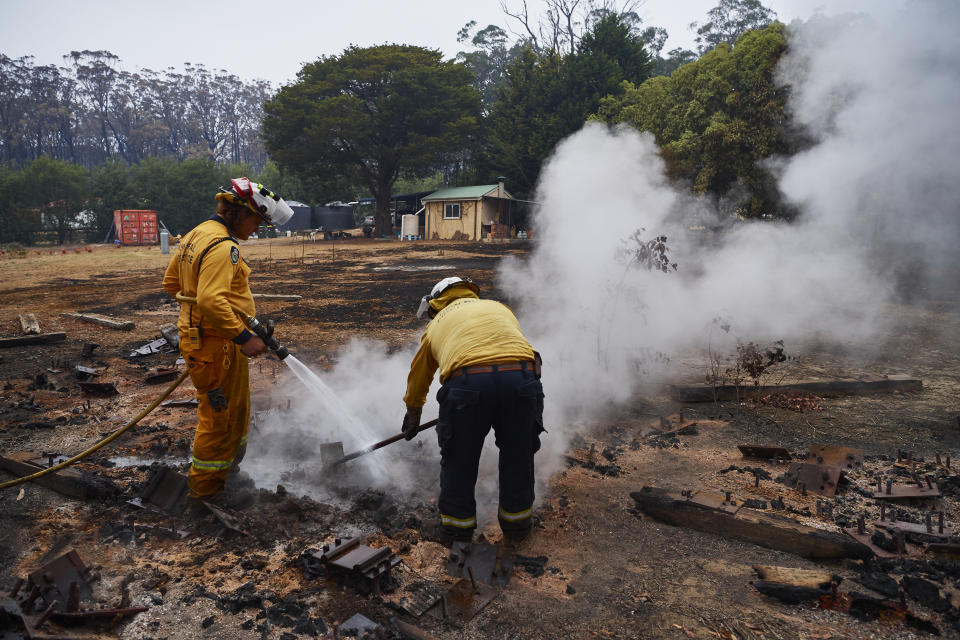
Premier Gladys Berejiklian said besides the two new fires, everything else was playing out as forecast with the hot and windy conditions on Friday.
But she urged communities remain vigilant.
"In essence, we know it's going to be a long and difficult night," Ms Berejiklian said.
"We won't know the extent of the impact of these fires until early tomorrow morning."
The Rockton fire in the Far South Coast region began spotting past containment lines under increasing wind speed and high temperatures on Friday.
"Firefighters have done a lot of work over the past seven days to prepare for today's bad fire weather, and we can't guarantee that fires will hold," Monaro Rural Fire Service public liaison officer Andrew Dillon said on Friday morning.
"Fires in forested country, in the tall timber, they will run today, and they will get up and lift in activity, so people need to be prepared."
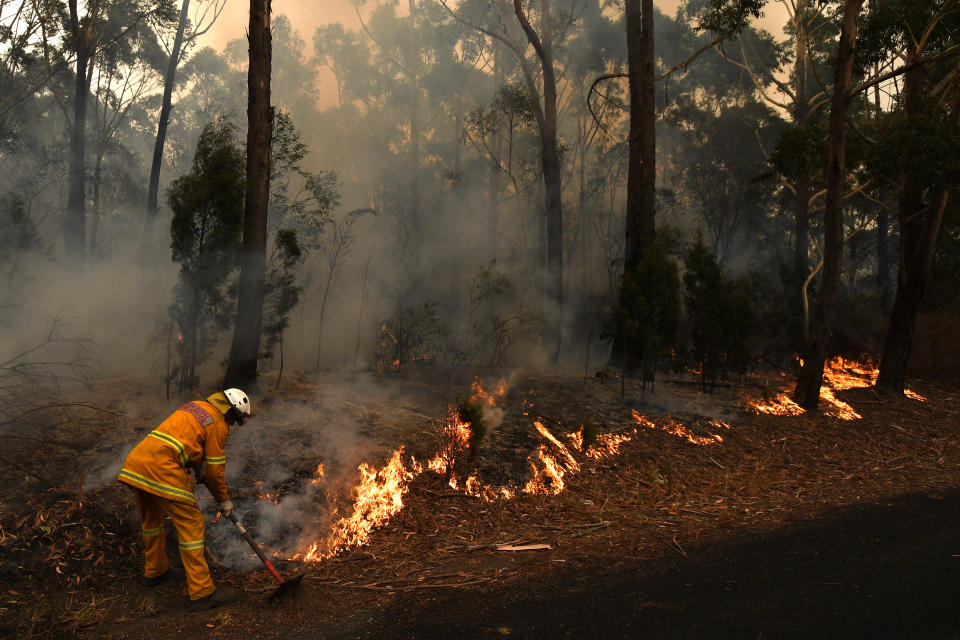
Authorities fear large blazes on the NSW South Coast could merge, creating a fire front that stretches from south of Mittagong to north of Bega.
Fires in the Snowy Valley – which have burnt through an area half the size of Sydney – may also become one on Friday.
"We will end up out of the end of today, and whatever happens tonight, with another complex of fires that have all joined together to create another large challenge," Mr Fitzsimmons said.
About 60 of the 130-odd bushfires burning around NSW are uncontained.
A southwesterly wind change is expected to cross the state late on Friday afternoon with gusty southerly winds to hit coastal towns in the evening before dying down in the early hours of Saturday.
Wagga Wagga and Albury both exceeded 40C on Friday afternoon while Nerriga, Young and Goulburn were all in the high 30s.
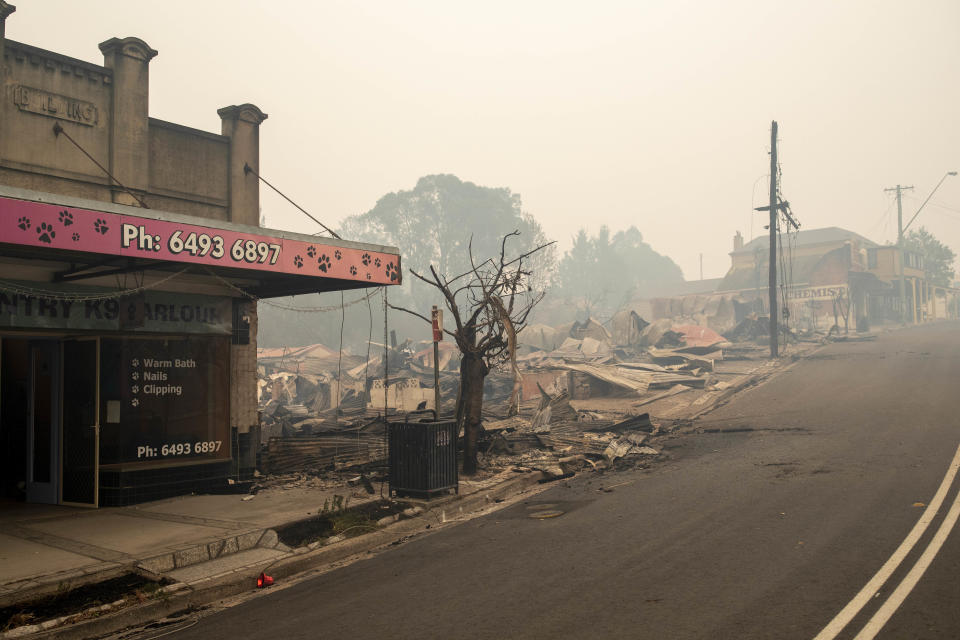
Conditions are due to ease later on Saturday with showers and isolated thunderstorms in coastal parts and adjacent ranges expected, Bureau of Meteorology spokesman Grahame Reader said.
"These are probably not significant falls. There could be heavier falls locally but that won't be widespread."
Prime Minister Scott Morrison said the navy ship HMAS Adelaide remains on stand-by off the Eden coast and is assisting with resupplying.
Australian Defence Force national coordinator Major General Jake Ellwood on Friday said just under 2000 reservists are on duty to provide support during the bushfires.
"Today we see a very fluid situation with difficult conditions and we will have to see how things progress," he said in an update on Facebook.
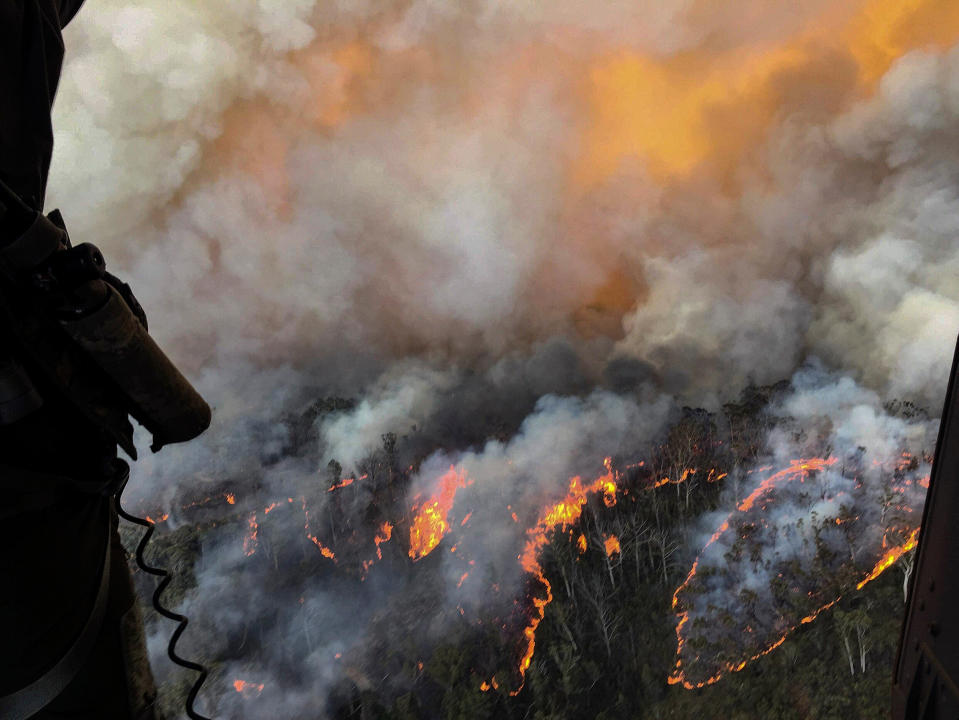
The number of homes confirmed destroyed since January 1 has increased to 1079, the RFS said on Friday.
At least 1995 homes have been lost since the start of the fire season. Another 816 have been damaged.
Since July, 20 people including three firefighters, 6200 livestock and millions of wild animals have died in the NSW bushfires.
Emergency eases on Kangaroo Island
Properties have been lost, firefighters injured and more land blackened after a night of horrific conditions across the Kangaroo Island bushfires, but the emergency has eased.
Assessments are underway, but some homes are believed lost at Vivonne Bay while the town of Parndana was spared for a second time, despite fire bearing down on it from several directions.
Both towns had been evacuated amid emergency warnings and the escalating danger.
Two Country Fire Service trucks were involved in burn-overs and two more CFS personnel were injured, taking the total hurt on Kangaroo Island to 22.
With rain falling across the fire ground on Friday, the warning levels for all fires were reduced first to a watch and act and then to a simple bushfire advice.
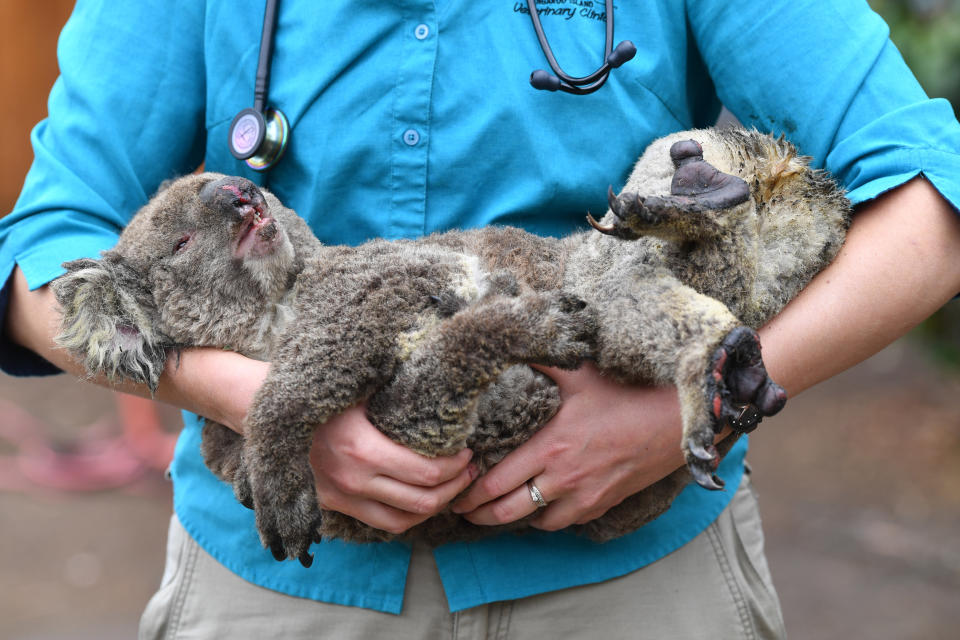
CFS chief officer Mark Jones said Thursday night was an "incredibly difficult" period for all 280 firefighters on the island.
"Winds were not consistent, they were blustery and came from many different directions," he said.
Fires were spotting during the night which allowed them to jump containment lines and in that situation Mr Jones said the number of firefighters on the ground almost became irrelevant.
"No containment lines or control lines can stop spotting or ember attacks on properties," he said.
"There's no way to stop those fires from spreading."
At the height of the emergency there were fears Kingscote, the island's largest town, might be cut off.
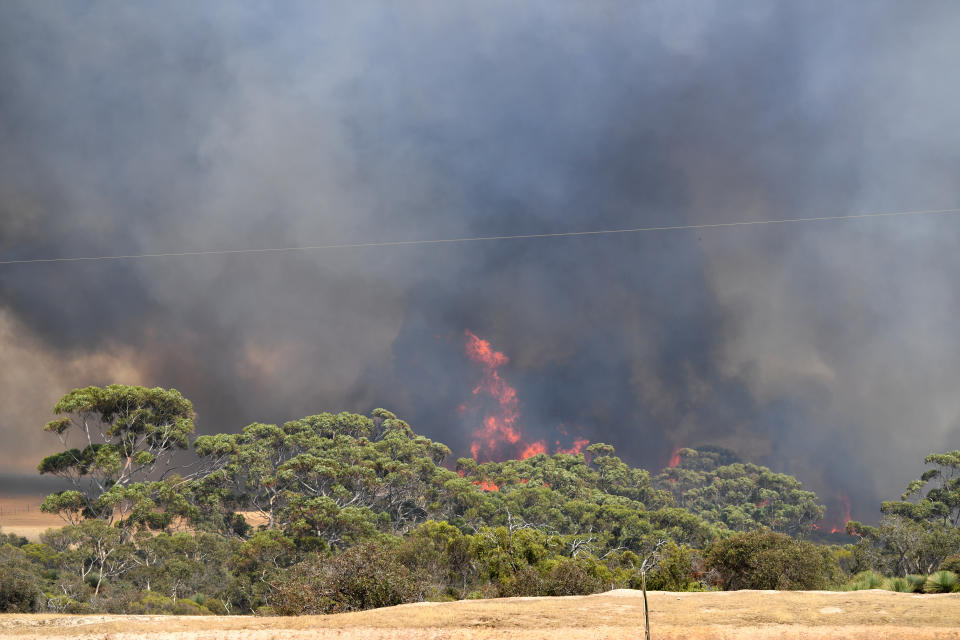
On Friday morning the town of Emu Bay, on the north coast, also came under threat, with residents moved to the nearby beach but the CFS said that situation had also eased.
Mr Jones cautioned that the fires would not be completely extinguished in the short term.
"The changing conditions should allow crews to be successful in reducing spread today and controlling the fires," he said.
"They will not be extinguished today, I would not want anyone to take false hope from that.
"This is an ongoing and lengthy operation."
So far more than 170,000 hectares of scrub has been burnt, including most of the famed Flinders Chase National Park, along with dozens of homes and hundreds of other buildings.
In response to the situation, the ferry service from the SA mainland was asked to restrict travel to freight, local residents and emergency service personnel but that decision was expected to be reviewed later on Friday.
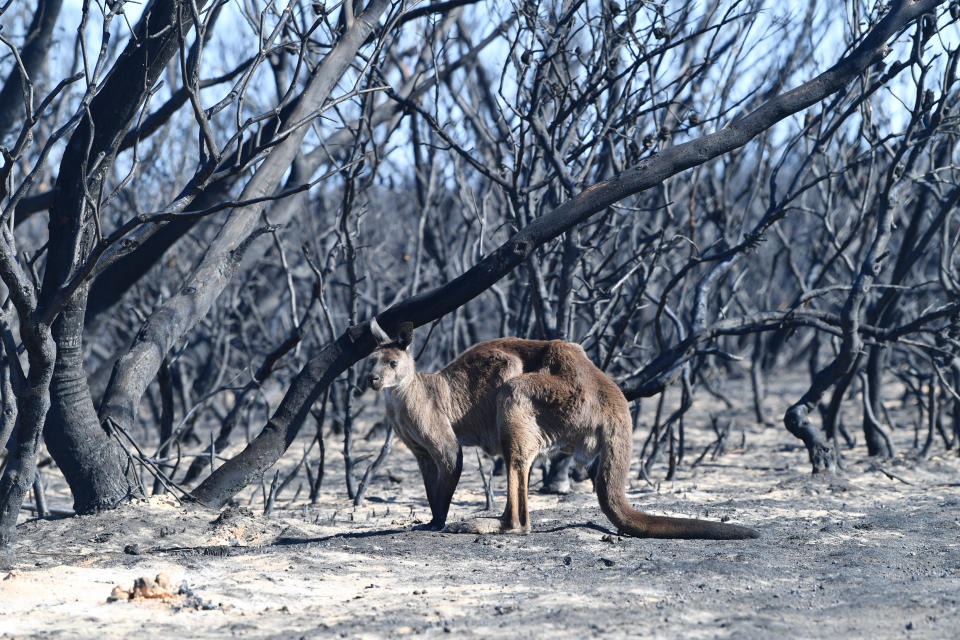
The overnight escalation in fire activity cut power to more properties with about 850 now without electricity.
SA Power Networks said its crews had been relocated to Penneshaw for safety reasons and would wait for CFS clearance before re-entering the fire zone.
Smoke from the fires also affected a large swathe of South Australia, with air quality in a number of areas listed as very poor on Friday morning, before improving.
The Kangaroo Island blaze first broke out on December 20 from a lightning strike but escalated rapidly last Friday before jumping containment lines again on Thursday.
It claimed two lives last week with outback pilot Dick Lang and his son Clayton killed as they returned to the family property.
Authorities said there were no further reports of missing people.
Do you have a story tip? Email: newsroomau@yahoonews.com.
You can also follow us on Facebook, Instagram and Twitter and download the Yahoo News app from the App Store or Google Play.



